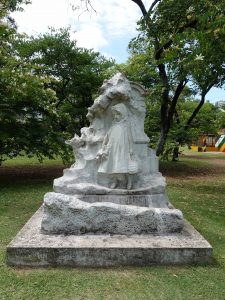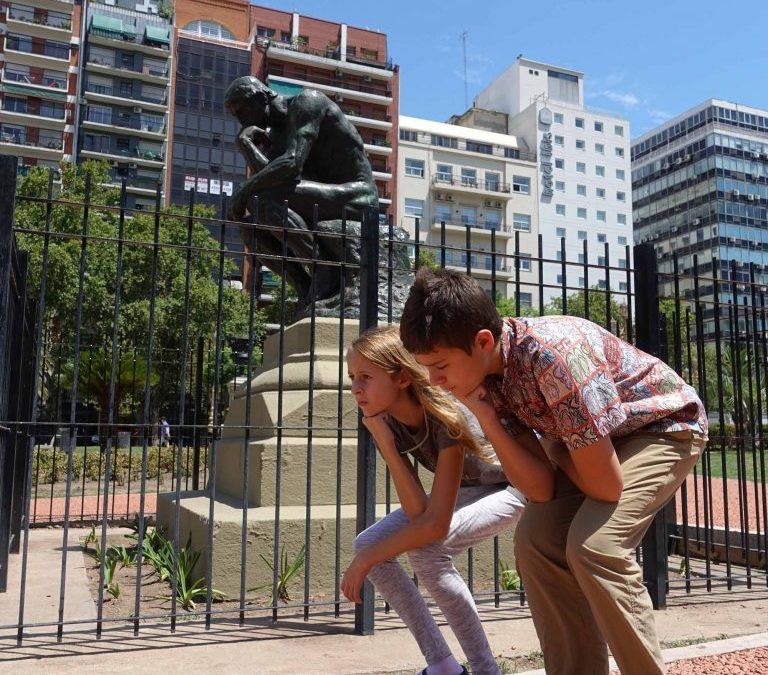It took some explaining to appreciate the moniker “Paris of the south.” In general, big cities can be rather generic. Paris makes my short list of exceptions, though. I was excited to visit, and hoping that BA would join Paris, Istanbul, Bangkok, New York, and the few other big cities that have enough unique character to make them stand out.
At first, it seemed a very poor comparison. Leaving the Aeroparque Jorge Newbery, we took a taxi into town. The domestic airport sits on the bank of Buenos Aires’ “river”, the Rio de la Plata, which isn’t really a river. Over 200 kilometers wide, the Rio de la Plata might be better categorized as an estuary (or possibly a gulf) that happens to meet the confluence of the Parana and Uruguay rivers. There is a fair amount of commercial activity along the Rio, and looking north all you see is the horizon; Uruguay is lost in the distance. Not nearly as charming as the banks of the Seine.
When we reached our apartment building in Recoleta, the streets started to look a bit more continental. Closer to the city center, wide avenues and European architecture were even more common. We also visited a city park with a large Rose Garden designed by a French landscape architect that did have a Parisienne feel. When pointed out, the similarities are there—certainly more so than any of the other Latin American capitals I have visited—but I certainly would not have made the comparison myself.
OK, so it’s not Paris. What is there to see and do in Buenos Aires? The most popular tourist attraction is the Recoleta Cemetery, the highest rent district in the city. In a relatively small space (about a city block), the city’s elite have been building monuments to themselves for centuries. Within and under these monuments are the crypts containing generations of their progeny, as many as six levels down. Most of the names were lost on us, but we did visit the tombs of Domingo Sarmiento and Eva Peron. The kids were not impressed.
The Rose Garden was interesting as it contained monuments to the revolutionary leaders that helped liberate the Americas from their European masters: Jose de San Martin (the liberator of Argentina), Simon Bolivar (who liberated the northern half of the continent), Jose Marti (who we learned about when visiting Cuba not long ago), and even George Washington. No monument to Che Guevara, but we did visit the University where he studied medicine.
Two highlights from BA: a Tango show, and discovering closed-door dining. Certainly, one of the Tango-capitals of the world, we had to go to a Tango show while in Buenos Aires. We were a little apprehensive as the show was not well attended (there were more people on stage than in the audience), but the show was fantastic! The dancing and live music were outstanding and included dances with drums, whips, and the Argentine equivalent of Hawaiian poi balls. After the show, we learned that the accordion player, Carlos Buono, was a virtuoso and was well-known around the world.
Closed-door dining was another highlight. Apparently, this exists around the world, but we had never heard of it before. We read about Casa Saltshaker in Lonely Planet and it came highly recommended. The restaurant is in the home of the proprietors, and only after you secure a reservation do you learn where that is. We arrived at 9 pm and had drinks with 8 others before joining them around the dining table in the chef’s home. We enjoyed great food throughout our stay in BA, but this 5-course meal was, without question, the best. The experience, also, was quite unique, and one that we look forward to repeating.

One of only 3 copies of Rodin’s The Thinker cast from the original mold.

Pope Francis used to give mass here before he was elevated.

The only statue of Little Red Riding Hood.

